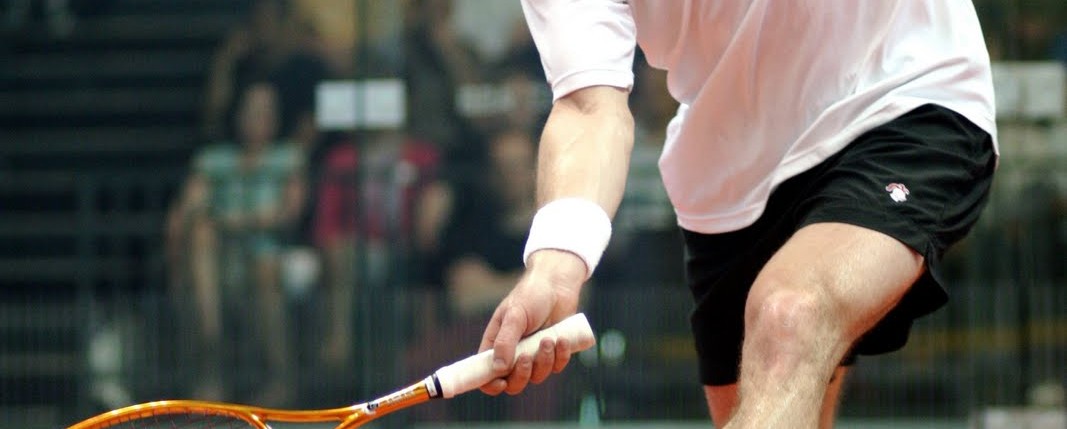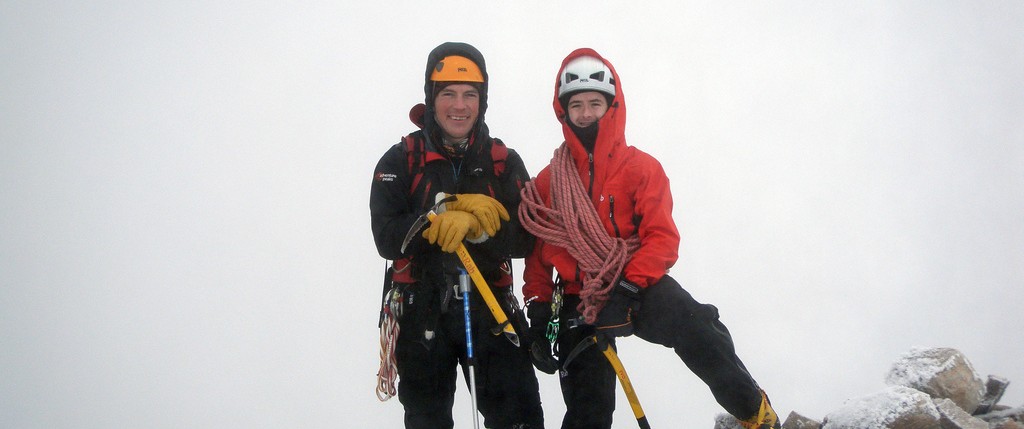Heart Rate A Barometer Of Health
Introduction
This article is inspired by an athlete you’ve probably never heard of, yet was at one point the greatest athlete in his sport, in addition to being analogous to the greatest athletes of all time. David Palmer, a professional squash player from Lithgow, Australia recently retired from the sport at the beginning of November, having had one of the most illustrious careers ever seen.
David’s story is a lengthy one; however the focus of this article is a period in his life from 1992, where he had to choose between the AIS (Australian Institute of Sport) and Joe Shaw, a coach who pioneered the use of, at the time, highly advanced methods for the development of elite athletes. David chose Joe to the annoyance of the AIS, and subsequently became one of the greatest athletes of all time.
Joe used many methods to monitor David’s progress, and whilst these are now mostly common practice among elite athletes such as using binaural beats to alter the brain wave zone and implant positive affirmations, at the time they were revolutionary, and some still are.
The Resting Heart Rate
A key training aid which can be employed by a variety of athletes (stretching from recreational to elite) is that of the resting heart rate (RHR). Most people who exercise can tell you how to measure the pulse, and also that a low pulse can in theory denote a good level of fitness. Most people however are unaware of the full potential of the RHR to describe the current and future states of their body.
Joe Shaw used this expression to explain the reasoning behind measuring the RHR:
IF YOU CAN’T MEASURE IT, YOU CAN’T UNDERSTAND IT. IF YOU CAN’T UNDERSTAND IT, YOU CAN’T CONTROL IT. IF YOU CAN’T CONTROL IT, YOU CAN’T IMPROVE IT.
If we take the example of most exercisers from above, most can measure the pulse, however most people’s knowledge of that system stops at understanding.
The pulse rate can be thought of as not just an indication of fitness, but also as an indication of vitality. It’s essentially a barometer of the body.
There are limitations however and these need to be understood in order to realise the importance of the RHR.
Firstly, it is natural for some people to exhibit symptoms of arrhythmia. Arrhythmia is a condition whereby the heart beats faster than normal (tachycardia), or slower than normal (bradycardia). This point shows the main limitation of using RHR as an exclusive measure of fitness. For example, you may test untrained subjects at random, and find that some have a RHR of around 50bpm. You may then test well trained subjects, and find some of these also have a RHR of 50bpm. Whilst this is an extreme example, it shows that RHR’s are highly variable and specific to the individual.
Levels of Fitness
So whilst it may not be scientifically accurate to compare between subjects, the RHR can be used very accurately to measure within subject fitness (the fitness of an individual). Many formulas exist to determine various zones of heart rate, and also as a predictor of fitness based on the RHR, however the most important measurement is the starting RHR; that is the very first RHR that you take and record. With this number, fitness can be measured very accurately providing several factors are met. Firstly, the RHR should be recorded daily, and secondly, the heart rate should be measured (preferably when you wake up) at the same time each day to ensure consistency.
On taking the RHR for a period of around 4 weeks, you can begin to understand your own pulse rate better, and even pre-empt and prevent overtraining which is explained later.
A trap many people make the mistake of falling into, especially at the beginning of a training programme, is expecting the heart rate to fall down too quickly. When no decrease is noticed after a week, they get disheartened and stop their training.
A lowering in RHR is brought about through long term training, resulting in athletic bradycardia/ventricular hypertrophy (enlargement in the heart muscle). This can often take many months, with shorter term changes such as increases in red cell volume occurring first. Once the RHR starts to decrease, it’s important to always refer back to the initial RHR value, since this will show your true progress, and be much more informative that a generic heart rate zone table used to describe the general population. These should generally only be used as a rough guide.
A Barometer of Health
Another feature of the RHR which is relatively unknown by the majority of athletes is that the RHR is generally very stable, and usually fluctuates only, and very precisely, at the onset of illness, so the RHR in this respect can be thought of as a barometer of health.
An extract from Joe Shaw’s journal illustrates this:
“I cannot stress the importance of this measurement strongly enough. The RHR is an indicator and a barometer that informs you of problems before they occur. If his RHR rises from 37 to 40 overnight then there has to be a reason. David assesses what he did yesterday, how he feels, tired or whatever, what he ate, and establishes a reason. If he cannot, then he monitors the RHR the next morning and it has risen to 42. He immediately stops training because he has an illness about to commence, or it has by now commenced, and he requires medication or rest.”
Whilst this may seem a very extreme example (it must be remembered David made his living from sport), it illustrates the point that the RHR, when measured in a consistent way can advise on whether or not to train, and whether the current training regime is resulting in improvements to fitness.
Crucially for more regular exercisers, the RHR can give indications of the onset of Chronic Fatigue Syndrome. It is important to note that contrary to popular belief, anyone partaking in regular exercise has a risk of developing Chronic Fatigue Syndrome, especially if the individual partakes in heavy bouts of high intensity, short duration sprint or power exercises. Another extract from Joe Shaw’s journal illustrates this:
“[David’s heart rate has risen from 37 to 42 in two days.] It may be that he is overtraining, and the warning signs have been given. You can bounce back from exhaustion in 2/3 days but overtraining is a state of prolonged fatigue and can destroy your athlete. One AIS pupil ran 400 meters in 75 seconds, 30 times in the morning, considering that essential to his fitness. He finished with Chronic Fatigue Syndrome, and in my opinion these runs did not help him at all.”
“Overtraining may be defined as a state of prolonged fatigue caused primarily by excessive training and characterised by decrements or stagnancy in performance despite continuous training (Costill 1986 & Kuipers and Keizer 1988). Overtraining is the result of short term balance between stress and how your body adapts to it (Michael Yessis Ph D .Sports Medicine)”
Using expression the if you can’t understand it, you can’t control it etc… through not understanding the actions of the RHR, an athlete could mistake a sudden increase in heart rate as a sudden drop of fitness, or conversely, could train exceptionally hard but not detect any noticeable decrease in heart rate. Both these situations require a thorough evaluation of the training plan:
1) Am I doing the correct type of training which is specific for my needs? 2) Am I giving my body enough time to rest and recover? (A fundamental part of training) 3) Am I eating and drinking to sufficiently replace the nutrients I have lost? 4) Is my training regime sufficiently varied? 5) Am I being realistic? (Remembering that it can take several months to notice a decrease in RHR)
From the above examples and current literature, it would appear that the monitoring of RHR is imperative if you are serious about maintaining health, and increasing fitness levels.
http://www.davidpalmer.com/Coaching/CoachJoe-01.htm
http://squashclub-karlsruhe.de/infos/palmcoach/coach_inhoud.htm%20
![DAVID+PALMER[1]](https://www.matthewdthornton.com/blog/wp-content/uploads/2015/03/DAVID-PALMER1.jpg)


![7172758691_77aaba5afa_b[1]](https://www.matthewdthornton.com/blog/wp-content/uploads/2015/03/7172758691_77aaba5afa_b1.jpg)
![8475136001_180d3aa7fb_b[1]](https://www.matthewdthornton.com/blog/wp-content/uploads/2015/03/8475136001_180d3aa7fb_b1.jpg)
![8476223794_6db50831f4_b[1]](https://www.matthewdthornton.com/blog/wp-content/uploads/2015/03/8476223794_6db50831f4_b1.jpg)
![8475135163_057a94e54d_b[1]](https://www.matthewdthornton.com/blog/wp-content/uploads/2015/03/8475135163_057a94e54d_b1.jpg)
![8475148835_49ecafa2f3_b[1]](https://www.matthewdthornton.com/blog/wp-content/uploads/2015/03/8475148835_49ecafa2f3_b1.jpg)
![7172757267_ba8e840f87_b[1]](https://www.matthewdthornton.com/blog/wp-content/uploads/2015/03/7172757267_ba8e840f87_b1.jpg)
![8475136399_40f5ddc3e0_b[1]](https://www.matthewdthornton.com/blog/wp-content/uploads/2015/03/8475136399_40f5ddc3e0_b1.jpg)
![8476224808_c7748f95fa_b[1]](https://www.matthewdthornton.com/blog/wp-content/uploads/2015/03/8476224808_c7748f95fa_b1.jpg)
![7357977040_b2cbbbaf42_b[1]](https://www.matthewdthornton.com/blog/wp-content/uploads/2015/03/7357977040_b2cbbbaf42_b1.jpg)
![7172770349_47d836e25c_b[1]](https://www.matthewdthornton.com/blog/wp-content/uploads/2015/03/7172770349_47d836e25c_b1.jpg)
![7172769707_8ae2b87ece_b[1]](https://www.matthewdthornton.com/blog/wp-content/uploads/2015/03/7172769707_8ae2b87ece_b1.jpg)
![8476224598_8369111969_b[1]](https://www.matthewdthornton.com/blog/wp-content/uploads/2015/03/8476224598_8369111969_b1.jpg)
![7357966982_89be168d04_b[1]](https://www.matthewdthornton.com/blog/wp-content/uploads/2015/03/7357966982_89be168d04_b1.jpg)


